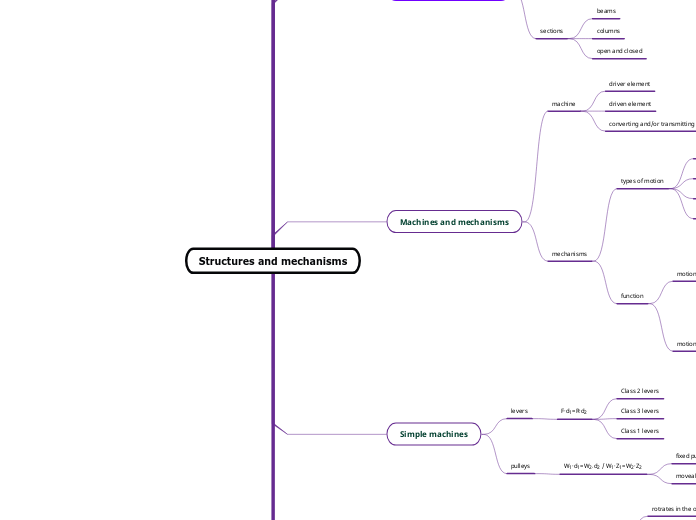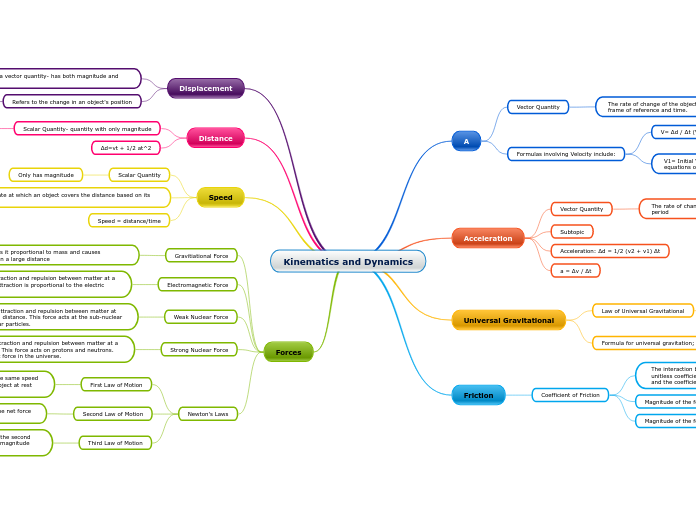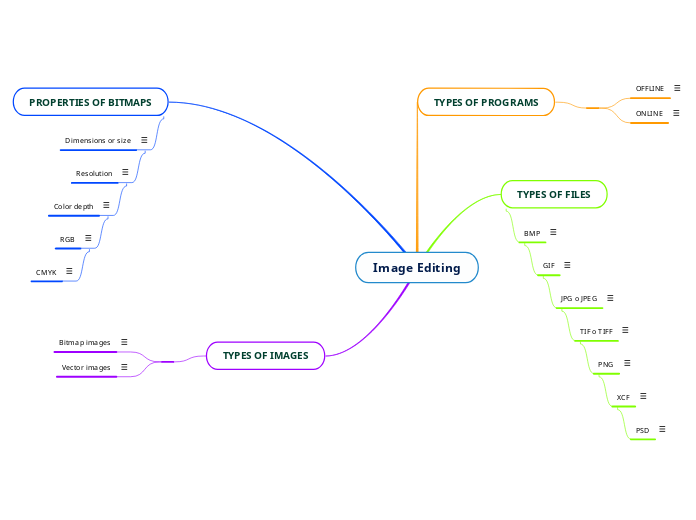Team 1
1) Immanuel
2) Edmund
3) Marvin
4) Leroy
5) Zhi Jie
Defintion
They must resist forces.
They must not collapse during use.
they must hold parts in the right place.
Structure Failure
Function
Stiffness
Depends on its cross sectional shape.
Elasticity
Ability of a material to return to its original shape after deformed.
Toughness
Ability of a material to withstand an impact without breaking.
Hardness
Ability of a material to resist cutting, scratching or wearing off.
Strength
Ability of a material to resist force without breaking.
Reasons
Wrong use of material.
Failure of joint.
A lack of understanding of the forces involved in design.
Fatigue resulting from changes in the properties of a material over a period of time.
Excessive loads.
Incomplete knowledge of the conditions a structure is likely to face.
Eg. A structure designed with great strength in tension and compression, might fail when subjected to twisting forces.
Structural failure refers to loss of the load-carrying capacity of a component or member within a structure or of the structure itself.
Types of structure.
Natural
Tree Branches
Spider Web
Animal Skeleton
Shell Structure
Crab Shell
Man-made
Made by human.
Shell structure
Safety helmet
Water Bottles
Can Drinks
Frame structure
Eiffel Tower
Bridge
Structure Reinforcements
Folding
Gussets Plate
Used to add strength to a joint by increasing the area of the joint and help to distributr stress more evenly.
Eg.Photo frames
Web
Small piece of material joined to a corner to prevent the sides moving.
Can be stuck over joint in a frame to add strength.
eg.Shelves, brackets
Brace
Add strength to a joint.
Eg.Used in shelf brackets, wall brackets, cantilevers used to support other structure like streetlamps.
Ribs
Honeycomb Structure
Is light but strong when it is in compression.
Eg. Is light but strong when it is in compression.
Triangulation
Corrugations
Sheets of material are made stronger when laminated between thye piece that is shaped into a series of regular folds that look like waves.
Eg.sheets of materials are made stronger when laminated between the piecethat is series of regular folds that look like waves.
Lamination
Sheets of materials are made stronger when laminated with their grains at 90 degree to each other.
eg. Laminated sheets of wood; Foamboard.
Mechanism
Definition
A machine or mechanical appliance.
The arrangement of connected parts in a machine.
A system of parts that operate or interact like those of a machine.
An instrument or a process, physical or mental, by which something is done or comes into being.
They help us move things.
They helps us control things.
Types of Mechanism
Cam and follower
A cam and follower system is system/mechanism that uses a cam and follower to create a specific motion. The cam is in most cases merely a flat piece of metal that has had an unusual shape or profile machined onto it. This cam is attached to a shaft which enable it to be turned by applying a turning action to the shaft. As the cam rotates it is the profile or shape of the cam that causes the follower to move in a particular way. The movement of the follower is then transmitted to another mechanism or another part of the mechanism.
Video on cam and follower
Pear-shape Cam
Knife edge Follower
Gears
Video on gears
Types of gears
Gears and Chains
Video on Gearsand chains
Bevel Gears
Bevel gears
Spur Gears
Description
1)To rotate in the opposite direction
-If the gearsare of different size,the smaller gear turns faster than the bigger gear.
2)To rotate in the same direction
-An idler gear is placed in between the driver gear and driven gears
3)Gear train
-Made by meshing several spur gears together
-Can significantly increase/decrease the speed or turning force in a system
Pulleys
Pulley systems are used in the real world to lift large masses onto tall heights. You might have seen the workers repairing the roof of a house and using the pulley system to lift their tools or materials to the roof. A pulley is an example of a simple machine.
The pulley system consists of one or more pulleys and a rope or a cable. The number of pulleys used may increase or decrease the mechanical advantage of the system. Generally, the higher the mechanical advantage is, the easier it is to lift the object that is being lifted.
Overall, no matter how easy it is to use the pulley system, the system itself is not very efficient due to the force of friction. For example, one has to pull two meters of rope of cable through the pulleys in order to lift an object one meter.
Wheel and axle
Inclined plane
Levers
In physics, a lever is a rigid object that is used with an appropriate fulcrum or pivot point to either multiply the mechanical force (effort) that can be applied to another object or resistance force (load), or multiply the distance and speed at which the opposite end of the rigid object travels. This leverage is also termed mechanical advantage, and is one example of the principle of moments. A lever is one of the six simple machines
3rd Class Lever
In the 3rd class lever, effort is between the fulcrum and the load.
Skip Loader
2nd class Lever
Class 2: The load is situated between the fulcrum and the force, for example, a wheelbarrow or a nutcracker.
Broom/ Mop
Tin opener
Nutcracker
Fishing rod
1st Class Lever
Class 1: The fulcrum is located between the applied force and the load, for example, a crowbar or a pair of scissors or a seesaw.
Excavator
Scissors
Plier
See-Saw
Types of forces
Tension
Pulling, Stretching
Example: Fishing line;Lift cable;cables in a suspension bridge;string of a tennis racket
Shear
Sliding
Eg.Hinge pin of a pair of pliers, Rivets attaching a tenon saw blade to the handle, Rivets attaching to the scissors
Sliding force
Example:, Hinge pin of a pair of pliers; rivets attaching a tenon saw blade to the handle; rivets attaching to the scissors.
Compression
Pressing and Squashing
Eg.Pillar, Table leg
Pushing, Squashing
Example:pillar
Bending
One of the stronget shapes in structural design.
Frameworks such as truss
Eg.Used for supporting roofs and bridges
Example:, wing of a aircraft; fishing rod; TV rack; Flagpole
Torsion
Twisting
Eg.Shank of a scew driver, Shaft of a fan
Twisting
Example:, shank of a screw driver ; shaft of a fan
Quiz
Immanuel
1. They must resist force;
They must not collapse during use; and
They must hold parts in the right places.
2. Frame structure are constructed by joining seperate pieces of material to support various parts
3. Shell structure is an outer shell to provide strength.
4. Support, span, contain, protect
5.Internal Force: Act within the structure.
External Force: Act on the structure.
6.Dynamic load and static load. Dynamic load change the magnitude, position and direction of the structure while static load have a constant magnitude, position and direction of the structure.
7.Shear, Bending, Torsion, Tension, Compression.
Zhi Jie
1)Structures is something that is made up of different parts to form the object. It must resist forces, not collapse during use and must hold parts in the right place.
2)A frame structure is constructed by joining separate pieces of materials. called members to support and protect various parts.It consist of a framework or skeleton to provide strength and rigidity.
3)A shell structure do not have frame and have an outer shell. The skin itself provides strength and rigidity.
4)protect,span, contain, support.
5)external,act outside the structure
internal, act within a structure.
6) Dynamic load. Force that changes magnitude, position and direction on a structure.
Static load. Force that has a constant magnitude, position and direction on or within a structure.
7)Tension, compression, bending, torsion, shear.
Leroy
1. It is something which can support weight without
breaking, collapsing or failing. It is an arrangement of parts together to form a strong object. It must hold parts together. It must resist force. It comes in all shapes.
2. A frame structure is a structure that has a skeleton to it. It is reinforced by wood or metal.
3. A shell structure is something that has an outer casing or thick support to hold buildings.
4. A structure can
-Contain
-Protect
-Support
-Span through points.
5. External force is the force that is acting outside of the structure like gravity, friction, etc.
Internal forces act on the inside of a structure like its weight, etc.
6. Dynamic: forces that changes the magnitude,
Static
7. Compression
Tension
Torsion
Shearing
Bending
Marvin
Structure is made up of different parts to form an object which must resist forces; not collapse durinh use and hold parts in the right place
Constructed by joining separate pieces of materials,called members to support and protect various parts consist of a framework or skeleton to provide strength and rigidity
shell structure do not have frame and have an outer shell and skin itself provide strength and rigidty
Support; Span; contain; protect
Static and dynamic static load is a force thats has a constant magnitude,position and direction on or within a structure
dynamic load is a force that chnages magnitude,position and direction on a structure
Tension
compression
torsion
shear
Edmund
load
static
Force that has a constant magnitude, position and direction on or within a structure.
Dynamic
Force that changes magnitude, position and direction on a structure.
Structure
Must resist forces
they must not collapse during use
they must hold parts in the right place.
Forces
function
shell structure
Do not have fram and have an outer shell to protect it.
frame structure
Constructed by joining separate pieces of materials, called members to support and protect various parts.









